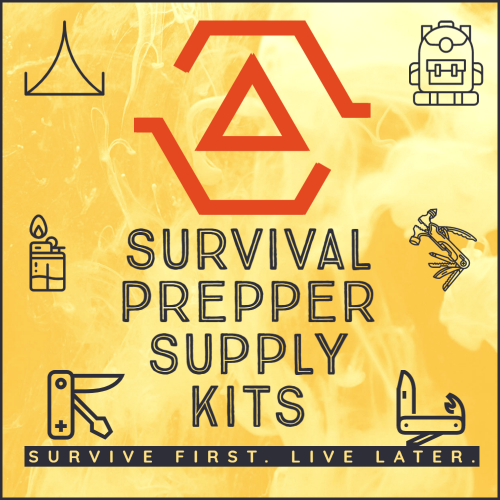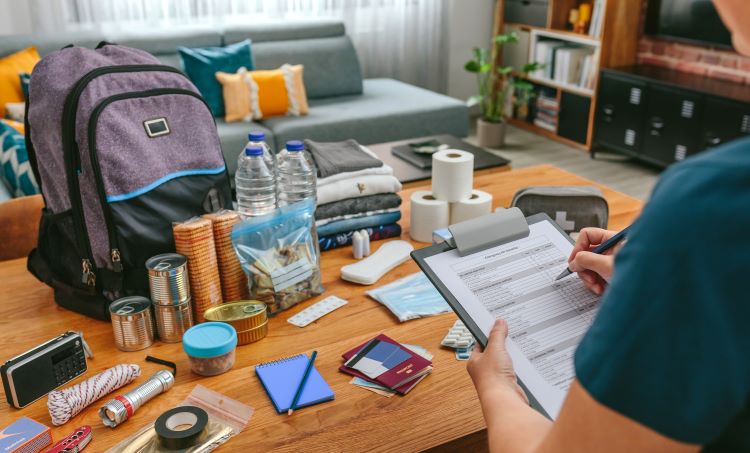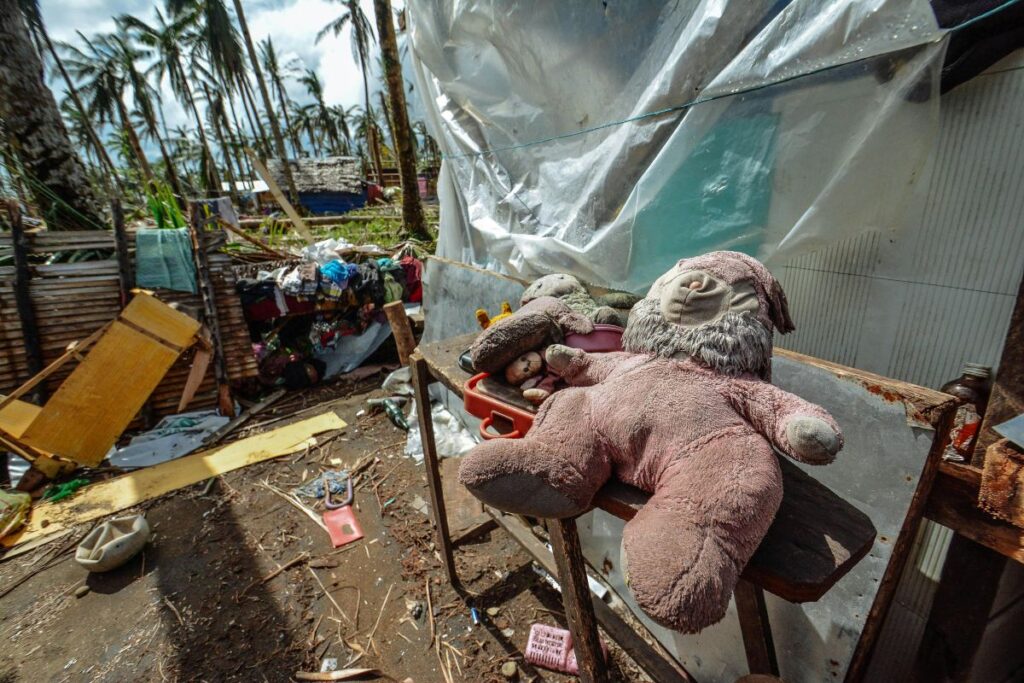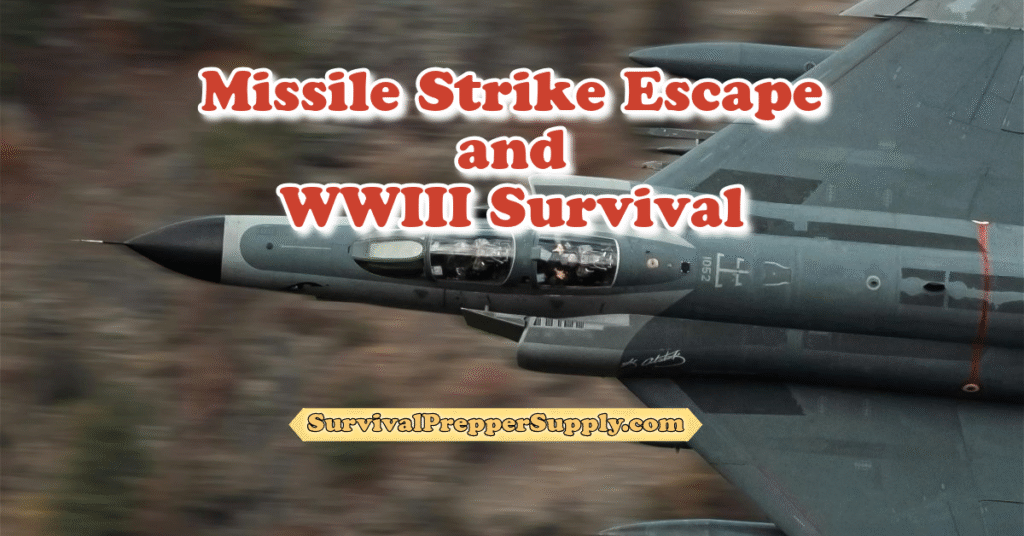One of the most well-known types of survival preparation is the bug-out plan approach. When people think about bug-out bags, they often envision a bag packed with everything they require, enabling them to swiftly leave any situation.
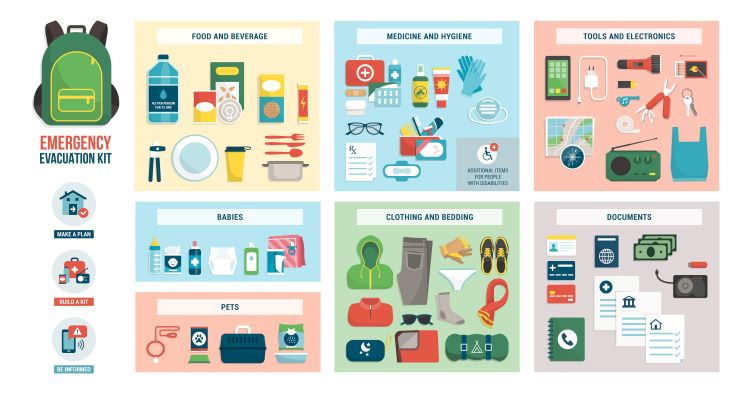
Some individuals maintain a bug-out bag in each of their vehicles and at their home. This ensures that they have an escape option if they encounter an emergency situation in the workplace, rather than having to drive all the way back to their home before starting their journey to safety.
Many individuals invest significant time and effort in assessing the ideal products to incorporate into their bug-out bags. However, just as crucial is the comprehension of what you’re supposed to do if the crisis begins.
In the following paragraphs, you will get a better understanding of what constitutes a solid bug-out strategy and what you need to consider when assembling the items. These preparations will provide you and your family with the confidence and ability to handle any disaster effectively.
Related: 7 Steps to Building a DIY Survival Prepper Supply Kit – Survival Prepping Tips
Prepare the Necessary Items for Your Getaway
What you decide to carry in your backpack will significantly impact your ability to endure right after a disaster. You want to find a balance that includes comforting possessions as well as essential supplies for survival.
Please note that this post contains affiliate links, which means that I will get a small commission for qualifying purchases at no extra cost to the buyer.
To begin, you’ll need to address the three main components of survival: sustenance, hydration, and protection. These aspects can be achieved effectively in a “bug out” kit. Begin with ensuring access to clean water, as it is essential.
Make sure you have some form of water filtration, such as purification tablets, iodine pills (for radiation), or a filter straw. With this, you’ll be able to access clean water wherever you go, as long as you can find a source of natural water such as a creek or pond.
Furthermore, carrying a durable water bottle with a filter straw that is large in size is recommended. It’s essential to ensure that it can be carried with ease during your travel, so opt for a bottle that is not made of flimsy material.
Meal preparation is also simple. Because your bag is likely to be kept for an extended period, you should include long-lasting, nutritious items such as MREs in it. They will keep your stomach full for quite some time.
In order to protect yourself from the elements during an emergency, you should attach a bug-out bag and tent to your backpack. While these items may seem cumbersome when packed, they can be easily organized and rolled to avoid problems.
In the end, make sure you include essential items such as a first-aid kit as well as items that are entertaining. During a crisis, it’s easy to become overwhelmed, and a diversion such as a book or magazine can help you to relax a little.
You can start adding more items to your bag once you have the fundamental necessities. Make sure they fit and that you can carry them with strength. If you’re storing a bag in a vehicle, consider selecting items that are able to withstand extreme temperature fluctuations.
Prepare Yourself for A Successful Bug-out Plan Experience
One of the crucial components of surviving that is often neglected is the psychological component. Many professional survivalists acknowledge that panicking is perhaps the most perilous action you can take in a survival situation.
If you’re psychologically ready to confront the perils and challenges related to evacuating, you’ll be able to maintain composure and make better judgments. In some cases, the right call can determine the success of your escape.
There are several ways to alleviate stress and make oneself more comfortable during a life-threatening scenario. Possessing knowledge beforehand is essential.
If you have the chance to gain practical experience with each component of your equipment and use it effectively, you will feel more comfortable using it. For instance, when it comes to lighting a campfire using a fire starter or setting up a tent, you need to practice and gain experience.
Picture yourself in a survival scenario. You have packed your belongings and are traveling away from an emergency. At night, you need to obtain firewood and build a shelter, however, this is the very first time you are utilizing the necessary equipment.
It’s possible that you are using the fire starter incorrectly, resulting in the inability to generate sparks to start a fire. Moreover, you may not know how the tent poles are connected, making it difficult to sleep soundly.
You can prevent such situations from occurring if you take the necessary time earlier rather than later to familiarize yourself with the contents of your survival kit. Many organizations provide classes for survivors, instructing them on how to do various tasks in a crisis scenario.
Related: The Ultimate SHTF Survival Lessons Guide, Lesson #1-2, Food and Water
Nevertheless, taking a class is not necessarily required. You can acquire the necessary knowledge with practice, as long as you have access to the necessary tools. You can also utilize online sources such as videos, detailed instructions, and step-by-step guides to guide you through the process.
By gaining practical experience with your equipment, you’ll feel more confident and less prone to panic. Additionally, this prior experience will greatly enhance your chances of surviving a difficult situation.
It’s also crucial to find activities to keep yourself engaged when you’re in the wild. You won’t always be required to be working, and you’ll quickly find yourself becoming restless. This can lead to panicked thoughts and worries.
By entertaining yourself with activities in the absence of electrical power, you can feel more relaxed. Keeping your kids occupied can also prevent them from feeling panicked. Too much idle time may cause them to experience restlessness.
Have a Specific Destination in Mind that You Can Work Towards
In the case of a survival situation, many individuals are familiar with the contents of their bags and all, but they may not have considered where they want to go. Rather than wandering aimlessly, consider planning your route beforehand. You need the best bug-out plan approach!
The ideal destination for escaping danger may differ among individuals as well as locations. However, it should be a location that can be comfortably reached within an acceptable timeframe and one that possesses the necessary amenities such as water and sustenance.
Generally, you’ll want to locate a remote area where you can set up camp and be relatively comfortable using a tent.
Keeping Yourself Physically Fit Helps During Long-term Travel. It is often underestimated how difficult it can be to survive a bug-out scenario. It’s not just a matter of simply leaving your home and driving to another location. Instead, it involves a physically demanding endeavor.
The first issue to consider when trying to reach an ideal bug-out location is the distance that must be traveled. For instance, if you’re residing in a city, the most remote campground could be several miles distant. Walking this considerable stretch would likely be challenging for many people.
Many grownups are inactive nowadays, so they lack the strength and endurance to walk very long distances, particularly a distance exceeding 10 miles. Furthermore, in a survival scenario, it’s likely that you would want to move faster than a stroll.
Be prepared to walk since there’s no guarantee that you’ll be able to use your vehicle. It’s possible that the roads will be congested, yet other circumstances may hinder you from getting or using gasoline.
In preparation for a bug-out scenario, you need to be prepared for walking the distance to your location. Training for this could include practicing on different surfaces since the road may not be as smooth as a treadmill.
In addition to housing your food, water, and other essentials, transporting these items can also be a challenge. It’s not uncommon to see military backpacks weighing more than 50 pounds.
All that additional weight you must carry will make your journey more challenging. It’s exhausting to have to hold so much excess weight for such an extended period.
Similarly, it would be prudent to get in good physical shape. By losing weight and building muscle mass, you will have an easier time enduring the challenging journey that lies ahead.
Physical fitness is crucial for outdoor activities, such as obtaining resources and constructing shelters. For instance, you may need to climb trees and rocks to gather food or carry items like wood for building more lasting structures.
It’s also beneficial for you to become comfortable consuming smaller quantities of food. This will assist with weight loss, but it will also help you adapt to the minimal quantities you’ll have to survive if you’re in the wild.
By taking the initiative today, you can be well-prepared for any disaster situation. There are various methods to get physically fit, but engaging in long hikes and running will be essential.
Related: The Ultimate SHTF Survival Lessons Guide, Lesson #3-5, Shelter, Fire Building and Communication
Prepare Different Emergency Escape Routes
The area you plan to escape to may not be perfect for every disaster scenario. Different crises may require distinct preparations.
For instance, in the event of a natural disaster such as a blizzard, it’s not advisable to flee into the wilderness due to its extreme cold and abundant snowfall. Rather, you should adhere to an evacuation plan that directs you toward a safe shelter.
Related: The Ultimate Guide to SHTF Survival Lessons, Lessons #6-7, Travel and Navigation, Stay Calm
In certain emergency evacuation situations, you may have access to your motor vehicle, enabling you to travel significantly farther than you would be able to if you were walking. In such cases, having a backup plan in place may be necessary, as the place you’re fleeing to may differ from the location you originally planned.
You might find that your destination of choice is already occupied by someone else. To avoid the risk of staying too close to other people, have a backup location in your mind.
It’s crucial to have contingency plans in place to avoid panicking and making poor choices in the face of difficulties. Instead, you’ll be able to swiftly switch to another course of action.
It’s crucial to have contingency plans in place in case your primary sources of sustenance, such as food and water, run out. Premade shelters, such as tents, may not always hold up.
It’s essential to be well-prepared when engaging in foraging or even hunting for sustenance. While you may carry many meals ready to eat, such as canned goods, you’ll eventually reach a point where the extra weight becomes too burdensome.
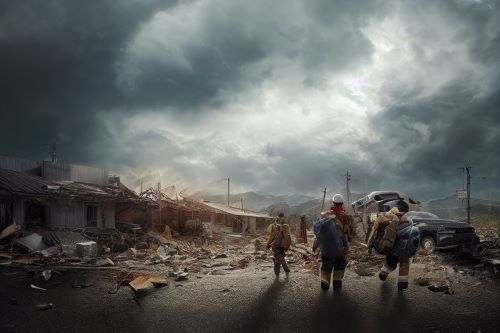
Along with carrying several bottles of fresh water, you’ll need access to plenty of clean drinking water. You’ll need water for tasks like washing up, cooking, and regular hydration.
The use of a portable filtration system, such as a filter or a water purification tablet, in conjunction with a capacious water container should assist you in this. These are essential for any well-prepared survival kit, as the crisis you are enduring may persist for longer than your available water supplies.
While you can’t carry much stuff to get ready for the collapse of your home, you can learn the fundamentals of woodwork and wilderness survival, enabling you to construct your own refuge using materials readily available in the wilderness.
Make sure you have all the equipment you will need to construct a shelter using materials found in the wilderness. This may include items like a hatchet, rope, and basic survival gear.
Keep in mind that a comprehensive evacuation plan is more than simply gathering supplies in a rucksack. It entails creating a strategy for escaping from a risky situation and having both the physical and mental capacity to endure challenging circumstances.
